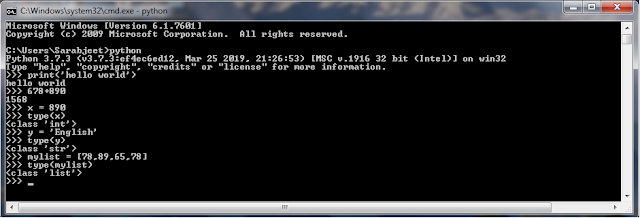LIST FILES AND FOLDERS WITH THEIR RESPECTIVE SIZES
Here is a python script which prints list of files and folders with their respective sizes. This script is particularly useful on Windows systems. Create a file with .py extension and paste the below code in the file. Copy the file to any directory or drive and run it on command prompt. #to list files and directories with size in the current path import os #importing the module os from columnar import columnar #to create a table on output, install it with: pip install columnar filepath = '.' #setting the path for which files and directories are to be seen file_list = os.listdir(filepath) #getting the list of files and directories data = [] #in this list/array, we shall add each file/fold...
